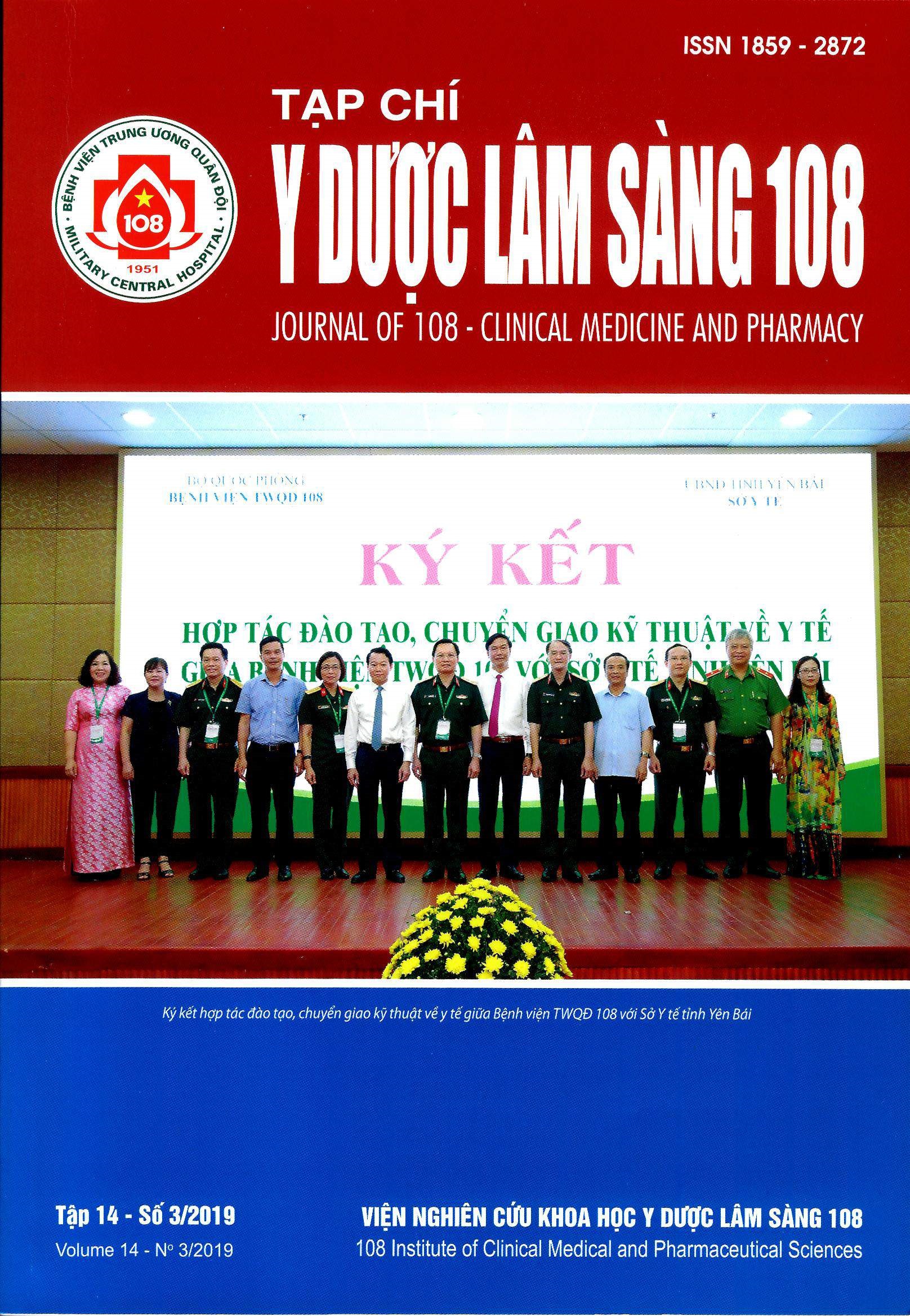Preliminary results of high-resolution manometry in diagnosis and classification for achalasia
Main Article Content
Keywords
Abstract
Summary
Objective: To initially evaluate the diagnosis results and classification of achalasia on high-resolution manometry (HRM). Subject and method: A case-series on patients diagnosed with achalasia using upper gastrointestinal endoscopy or barium study, clinical severity using the Eckardt’s score before and after treatment, and HRM results according to the Chicago Classification 3.0. Result: Between April and December 2018, 20 patients were recruited (7 males and 13 females, the mean age 35.9 ± 15.4 years). The number of patients with achalasia type I, II, and III, and absent contractility were 2, 12, 2, and 4, respectively. The Eckardt’s score were not different between achalasia and absent contractility patients. The mean integrated relaxation pressure of LES (IRP4s) in achalasia patients was 24.6 ± 6.3mmHg and was not different among types. The Eckardt’s score before and after treatment in achalasia patients were 6.8 ± 2.8 and 2.1 ± 1.9, respectively (p<0.05). After treatment, two patients had normalized IRP4s but absent contractility (1 patient) and distal esophageal spasm (1 patient). Conclusion: HRM is valuable in diagnosis, classification, and treatment monitoring in achalasia.
Keywords: Achalasia, high-resolution esophageal manometry.
Article Details
References
2. Francis DL, Katzka DA (2010) Achalasia: Update on the disease and its treatment. Gastroenterology 139(2): 369-374.
3. Howard PJ, Maher L, Pryde A et al (1992) Five year prospective study of the incidence, clinical features, and diagnosis of achalasia in Edinburgh. Gut 33(8): 1011-1015.
4. Kahrilas PJ, Bredenoord AJ Fox M et al (2015) The Chicago Classification of esophageal motility disorders, v3.0. Neurogastroenterol Motil 27(2): 160-174.
5. Müller M (2015) Impact of high-resolution manometry on achalasia diagnosis and treatment. Ann Gastroenterol 28(1): 3-9.
6. Pandolfino JE, Kwiatek MA, Nealis T et al (2008) Achalasia: A new clinically relevant classification by high-resolution manometry. Gastroenterology 135(5): 1526-1533.
7. Salvador R, Costantini M, Zaninotto G et al (2010) The preoperative manometric pattern predicts the outcome of surgical treatment for esophageal achalasia. J Gastrointest Surg 14(11): 1635-1645.
8. Schlottmann F, Herbella F, Allaix ME et al (2018) Modern management of esophageal achalasia: From pathophysiology to treatment. Curr Probl Surg 55(1): 10-37.
9. Torresan F, Ioannou A, Azzaroli F et al (2015) Treatment of achalasia in the era of high-resolution manometry. Ann Gastroenterol 28(3): 301-308.
10. Vaezi MF, Pandolfino JE, Vela MF (2013) ACG clinical guideline: Diagnosis and management of achalasia. Am J Gastroenterol 108(8): 1238-1249, quiz 1250.
 ISSN: 1859 - 2872
ISSN: 1859 - 2872
